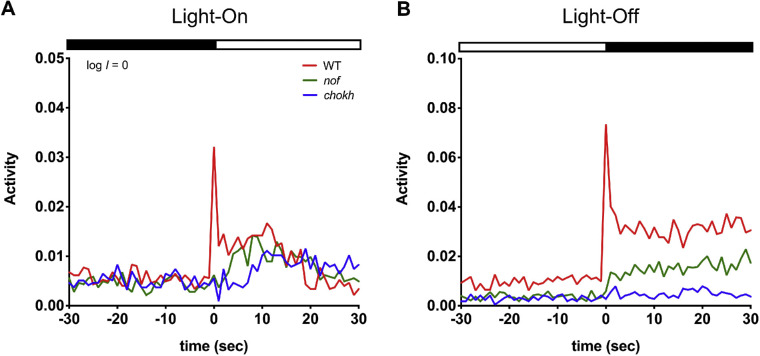Figure 3.
VMRs of WT larvae, nof, and chokh/rx3 mutants at log I = 0. VMRs recorded from WT larvae (red; N = 108), nof (green; N = 108), and chokh/rx3 mutants (blue; n = 72) at 6 dpf with a light stimulus of log I = 0 (3.77 µW/cm2 at 500 nm). Activity is the fraction of video frames in which a larva displayed movement each second (see Methods). In each plot, the curves show the average activity of the larvae in each condition. The light and dark phases are shown by white and black bars respectively, at the top of the plots. (A) Light-On VMRs. The nof and chokh/rx3 mutants lacked the fast response (<2 s after light onset) that the WT larvae displayed. All larvae displayed a gradual increase in sustained activity (>2 s after light onset), although the sustained amplitudes of both mutants were considerably smaller than that of WT larvae. (B) Light-Off VMRs. The nof mutants displayed a severe reduction in amplitude of the fast response (<2 s after light offset) compared with that of the WT larvae. All larvae displayed a sustained response (>2 s after light offset), with WT larvae the highest and chokh/rx3 mutants the lowest.

